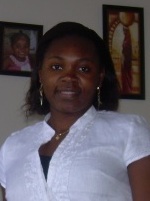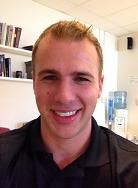BIO:
I grew up in North County San Diego, attending SDSU as an undergraduate. During that time, working in biotech opened my eyes to the exciting field of microbiology. I got my first experiences in academic research working with Stan Maloy learning bacterial genetics during my last two years at SDSU. During grad school, I transitioned into computational biology and microbial ecology working with Gary Olsen at UIUC. After obtaining my Ph.D., I decided to try something completely different and moved to Denmark to work on host-virus system of the extremophile archaeon Sulfolobus islandicus (grows at 80ºC/176ºF, pH 2…about the same as our stomach), which as its name implies, comes from acidic hot springs in Iceland. After travelling in Europe for a few years, I came back to the US to work at the interface of systems and reductionist biology with two great players in the field, Rob Edwards and Forest Rohwer.
POSITION:
Postdoc, joint between the labs of Rob Edwards and Forest Rohwer
RESEARCH:
Bacterial viruses (phage) are the most abundant and diverse biological entities on Earth (phage abundance/diversity is ~10x greater than that of prokaryotes, which in turn are ~100x greater than that of eukaryotes). Phage preform a vital role in environmental nutrient cycles through how they interact with their bacterial hosts. These interactions can take one of a few different routes, both ultimately culminating in the replication of phage. During bacterial infection, phage modulate their host’s metabolism and energy dynamics, which can result in changing host population size by either causing outright death of the host or providing a physiological advantage promoting host survival.
Even with an understanding of the importance, abundance and diversity of phage and their effect on nutrient cycling, we know relatively little about phage gene content; roughly 70% of all phage genes are of unknown function. Of the genes that have been characterized, they can be classified into one of three different functional groups: (i) phage replication, (ii) phage structural proteins, (iii) proteins that affect host metabolism. Genes involved in phage replication tend to be well conserved and are relatively easy to identify based on sequence similarity searches, while phage structural and metabolic genes tend to be more variable. Computational methods (e.g., artificial neural networks) are being employed to identify potential structural proteins, to much success, while metabolic proteins require more wet lab-based identification methodologies. Through working with Drs. Rob Edwards, Forest Rohwer and Anca Segall, I have developed a pipeline to predict functions for phage metabolic genes through the combination of physiological methods (phenotype microarrays and metabolomics) and genomics (metabolic modeling and metabolic networks) by creating a computational interface between biological and genomic information. Functional predictions are subsequently verified through the use of bacterial genetics and physiology.
RESEARCH:
Bacterial viruses (phage) are the most abundant and diverse biological entities on Earth (phage abundance/diversity is ~10x greater than that of prokaryotes, which in turn are ~100x greater than that of eukaryotes). Phage preform a vital role in environmental nutrient cycles through how they interact with their bacterial hosts. These interactions can take one of a few different routes, both ultimately culminating in the replication of phage. During bacterial infection, phage modulate their host’s metabolism and energy dynamics, which can result in changing host population size by either causing outright death of the host or providing a physiological advantage promoting host survival.
Even with an understanding of the importance, abundance and diversity of phage and their effect on nutrient cycling, we know relatively little about phage gene content; roughly 70% of all phage genes are of unknown function. Of the genes that have been characterized, they can be classified into one of three different functional groups: (i) phage replication, (ii) phage structural proteins, (iii) proteins that affect host metabolism. Genes involved in phage replication tend to be well conserved and are relatively easy to identify based on sequence similarity searches, while phage structural and metabolic genes tend to be more variable. Computational methods (e.g., artificial neural networks) are being employed to identify potential structural proteins, to much success, while metabolic proteins require more wet lab-based identification methodologies. Through working with Drs. Rob Edwards, Forest Rohwer and Anca Segall, I have developed a pipeline to predict functions for phage metabolic genes through the combination of physiological methods (phenotype microarrays and metabolomics) and genomics (metabolic modeling and metabolic networks) by creating a computational interface between biological and genomic information. Functional predictions are subsequently verified through the use of bacterial genetics and physiology.
PUBLICATIONS:
Frank, J. A. and S. J. Sørensen. 2011. Quantitative Metagenomic Analyses Based on Average Genome Size Normalization. Applied and Environmental Microbiology. 77:2513-21.
Guo, L., K. Brügger, L. Chao, S. A. Shah, H. Zheng, Y. Zhu, S. Wang, R. Lillesøl, L. Chen, J. Frank, D. Prangishvili, L. Paulin, Q. She, L. Huang and R. A. Garrett. 2011. Genome Analyses of Strains of Sulfolobus islandicus Model Organisms for Genetic and Virus- Host Interaction Studies. Journal of Bacteriology. 193:1672-80.
Rivera, A. J., J. A. Frank, R.Stumpf, B. A. Wilson, G. J. Olsen and A. A. Salyers. 2011. Inter-individual variation of the baboon vaginal ecosystem. American Journal of Primatology. 73:119-126.
Kim, T. K., S. M. Thomas, M. Ho, S. Sharma, C. I. Reich, J. A. Frank, K. M. Yeater, D. Biggs, N. Nakamura, R. Stumpf, S. R. Leigh, R. I. Tapping, S. R. Blanke, J. M. Slauch, H. R. Gaskins, J. S. Weisbaum, G. J. Olsen, L. L. Hoyer and B. A. Wilson. 2009. Heterogeneity of Vaginal Microbial Communities Within Individuals. Journal of Clinical Microbiology. 61:761-766.
Frank, J. A., C. I. Reich, S. Sharma, J. S. Weisbaum, B. A. Wilson and G. J. Olsen. 2008. Critical Evaluation of Two Primers Commonly Used for Amplification of Bacterial 16S rRNA Genes. Applied and Environmental Microbiology. 74: 2461-2470.
EDUCATION:
B.Sc. in Microbiology, San Diego State University, 2004
M.Sc. in Microbiology, University of Illinois Urbana-Champaign, 2006
Ph.D. in Microbiology, University of Illinois Urbana-Champaign, 2008
Postdoc, University of Copenhagen, 2009-2011





















